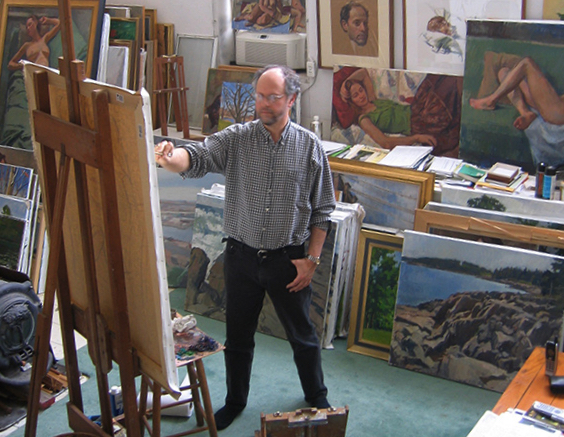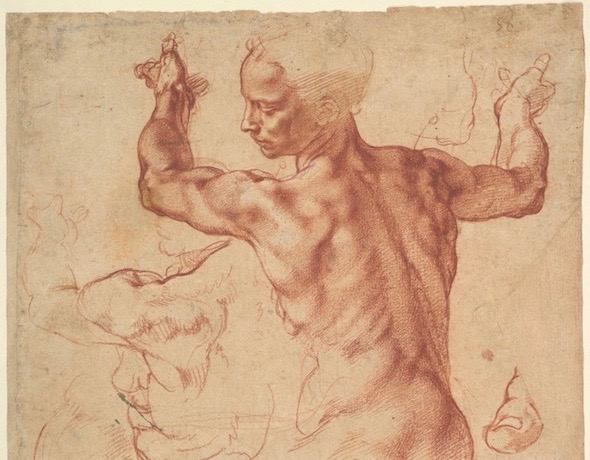Holbein: Capturing Character is up at the Morgan Library, and notwithstanding the reductive title, the show is a testament to the age of European humanism, and specifically to Hans Holbein’s role in painting its most prominent personalities. Born in Germany, Holbein’s later career was spent as court painter to King Henry VIII, which placed the artist at the center of England’s tumultuous political and religious conflicts. His sitters, most famously Thomas More, were apt to be separated from their heads at the king’s discretion. Holbein was so extraordinarily proficient as a draftsman, designer and painter that he was presumably insulated from the king’s wrath. Thanks to Holbein, we know exactly what the courtiers and ladies of Henrician England looked like. Their portraits are limned with such precision that we accept them five hundred years later as conclusive visual records.
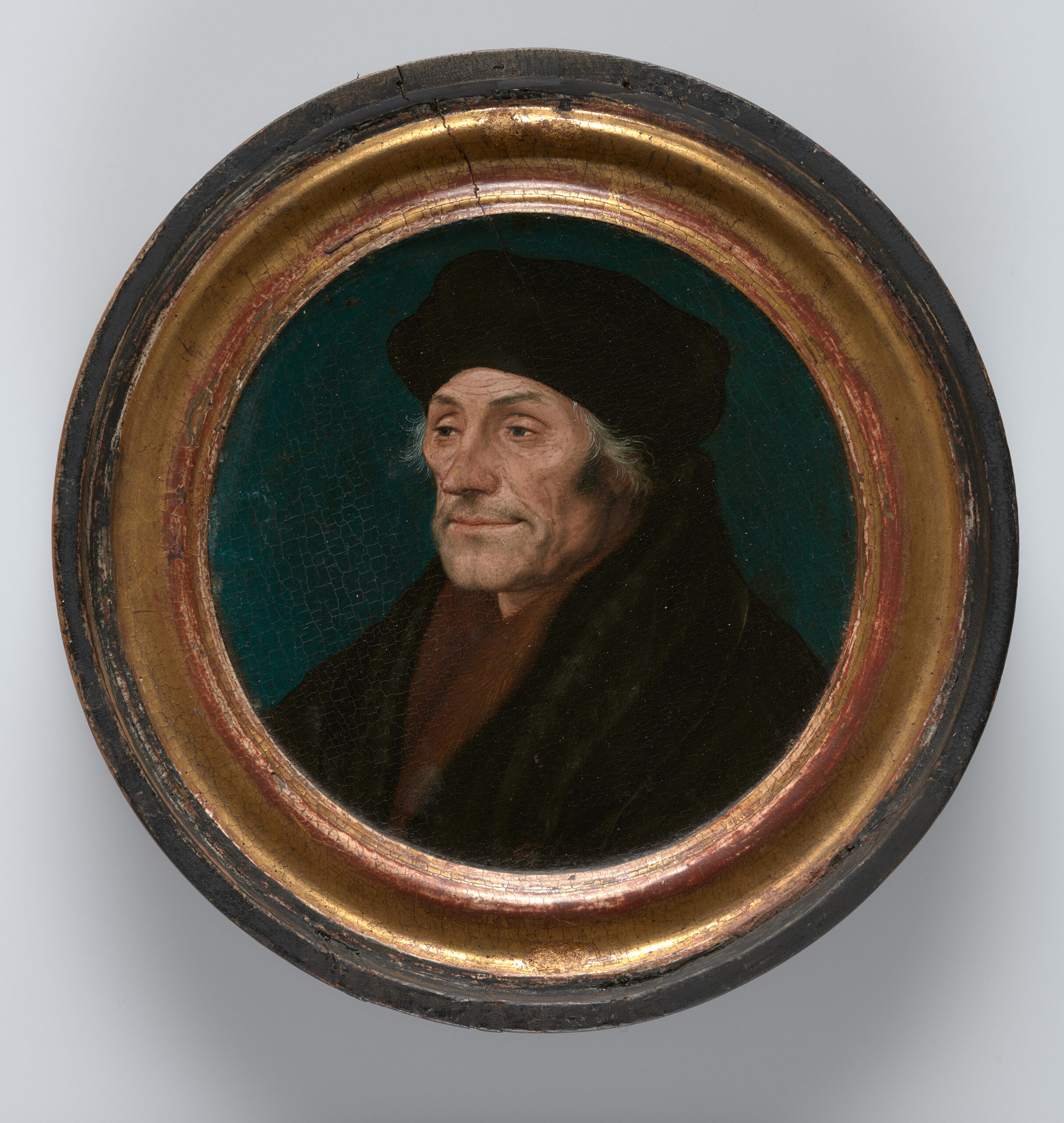
The exhibition opens with portraits of the philosopher-humanist, Desiderius Erasmus, whose writings made him the most famous man in Europe in the early 1500s. Though there is a marvelous etched portrait here by Dürer, the definitive images are by Holbein. Publicly, Erasmus was pleased. He sent one of the portraits to the Archbishop of Canterbury, writing, “I wanted you to have some piece of your Erasmus, in case God should call me hence.” He wrote letters of recommendation for the artist, but they were not particularly close. To him, Holbein was a very talented craftsman. Erasmus valued the written word above the visual arts: “For whereas waxen effigies, and portraits and genealogies, and golden statues, and inscriptions on bronze, and pyramids laboriously reared, decay one and all with the passing of long years, only the poets’ memorials grow stronger in the lapse of time, which weakens all things else.” Nonetheless, Holbein’s paintings of Erasmus writing at his desk, tight-lipped in concentration, have come to symbolize the humane intelligence of the Renaissance.

Holbein was born in Augsburg, Germany, in 1497 or 1498, the second son of Hans Holbein the Elder, a gifted draftsman who painted portraits and religious subjects in the Late Gothic manner. He trained with his father until his late teens, when he moved to Basel, Switzerland and set up as an independent painter and designer (we know that Holbein was familiar with Italian art, and some historians believe he visited Milan around this time). He first painted Erasmus in Rotterdam in 1523, and the following year traveled to Paris in hopes of painting at the French court. Holbein spent several years in Antwerp and London before returning to Basel. When portrait commissions there dried up amid the violence of the Reformation, Holbein went back to London in 1532. He was made court painter by 1536, and died during the plague in 1543.
The Morgan’s exhibition covers numerous facets of Holbein’s creative output: designs for books and medallions, painted miniatures, and tiny woodcuts of the dance of death series by Hans Lützelburger, based on Holbein’s inventive drawings. Portraits are the main course. The best known is the Frick’s painting of Thomas More, Lord High Chancellor of Great Britain and a powerful ally to Holbein. Our response to the painting is weighted by the knowledge of More’s martyrdom for refusing to accept the king as the supreme head of the Church of England—we believe we can make out the solemn rectitude in his bearing. In the end, historical context is unnecessary; the portrait is a tour de force in which the startlingly apprehended head, hands, fur and velvet add up to something far more than mere technical accomplishment. The painting’s illusionistic spell is broken only by the flat glint of a gold livery chain, symbolic of More’s service to the king. In this very nearly tromp l’oeil figure, spirit seems as tangible as body.
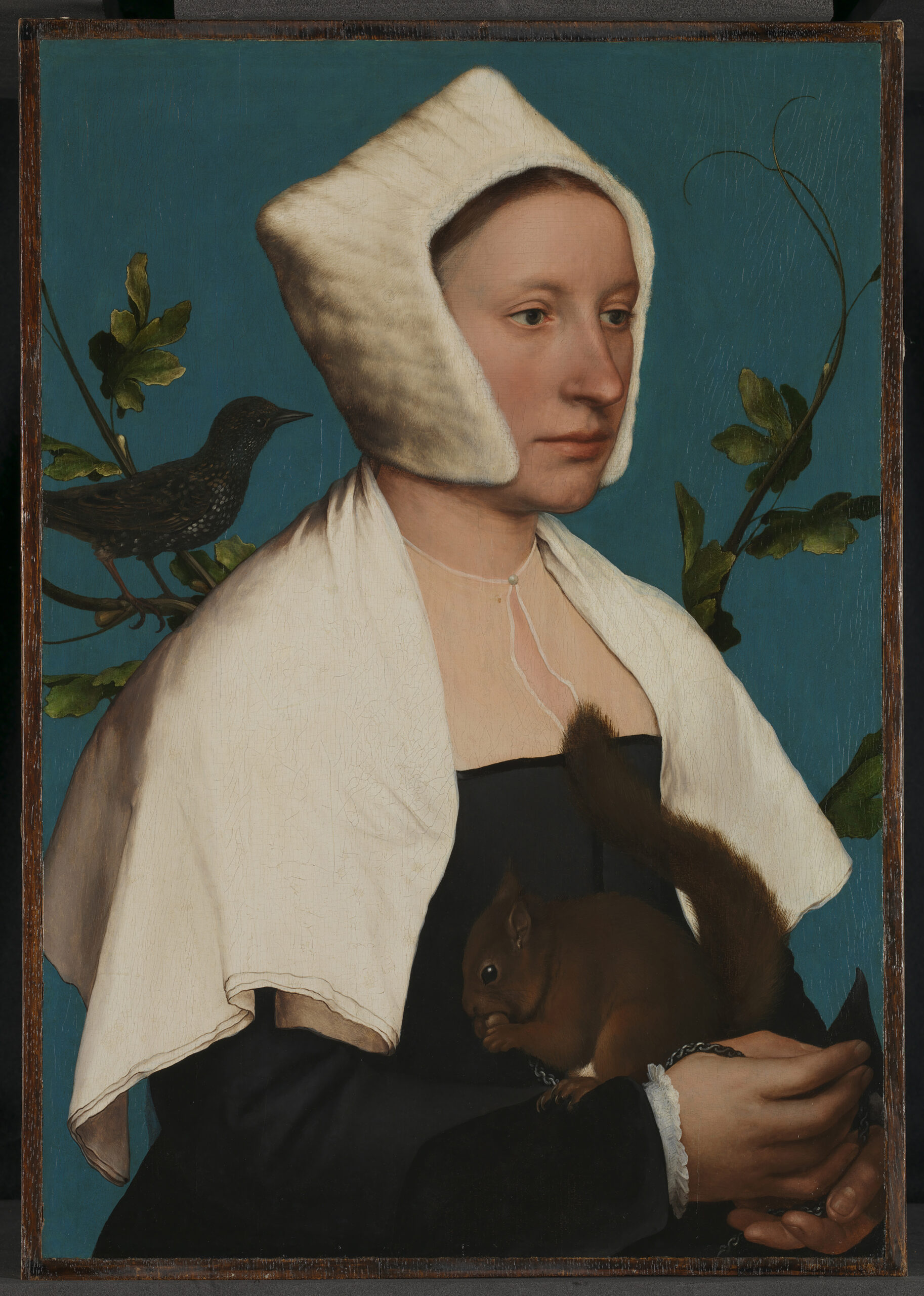
One wall is devoted to three portraits of Hanseatic merchants, German businessmen living in London. Each faces us more or less directly, clothed in black and seen before a flat plane of blue or green. The paintings date from Holbein’s second stay in London, when More had resigned from office and the artist had to find new sources for commissions prior to joining the royal court. Set in shallow spaces and adopting contrived gestures, they form an inscrutable triumvirate. The best of the lot, not in the show, predates the black on blue/green formula Holbein used for most of the Hanseatic paintings: Portrait of the Merchant Georg Giese in Berlin is one of Holbein’s most stunning essays of the figure in a three-dimensional space. Of the female portraits here, the standout is the poetic A Lady with a Squirrel and a Starling (Anne Lovell?), the fauna of the title added as an afterthought, it is assumed, per the patron’s request. The pocket-sized Portrait of an English Lady is astonishing for the naturalistic volume Holbein managed in a miniature format. Flesh and fabrics are painted as exquisitely as in the best of the larger portraits, without ceding the figure’s monumentality.

There are more than a half dozen portrait drawings in the exhibition, preparatory studies that are independent works of art, not to mention historical documents. A chalk drawing of Nicholas Carew, once a trusted adviser to Henry VIII, depicts the diplomat when he was in royal favor, a dozen years before he met the same fate as Thomas More at Tower Hill. A portrait of William Parr, Marquess of Northampton and brother of the king’s last wife, displays the full range of Holbein’s draftsmanship. With colored chalk, opaque watercolor, pen, brush and ink, Parr is described mostly through contours, the chalk delicately smudged about the head to suggest luminous shadows and facial hair.
Holbein’s drawings were the templates upon which his portraits were constructed. Yet they are anything but perfunctory. Each drawing is a record of the artist’s engagement with his sitter and the sensitive—if economical to the point of terseness—transfer of Holbein’s perceptions onto paper. That his much vaunted objectivity was the product of an emotionless photographic eye is belied by An Unidentified Woman (from the Netherlands?), included in the catalogue though not in the show. Touches of warm red chalk around the eyes, nose and lips flush the sitter’s face and accentuate an air of flirtation, the curators noting that “The artist seems to have studied the woman from very close.” Indeed, and she seems to have studied him back. The catalogue cites the “slightly coquettish” expression in a drawing of Lady Guildford, which had to be altered for her ultimate depiction as a devout woman. There’s an unblinking intimacy to all the drawings, even those of the coolest demeanor.
One of the qualities that is most impressive when viewing the drawings in the proverbial flesh, is the ease with which Holbein suggested atmosphere and depth with line, as in the portraits of Parr and Henry Howard. How, a mortal draftsman might ask, does one lay down a mark in chalk that not only designates the edge of a plane but implies the air between us and the subject? So much form, so little modeling. This deftness of touch carries through to the paintings.
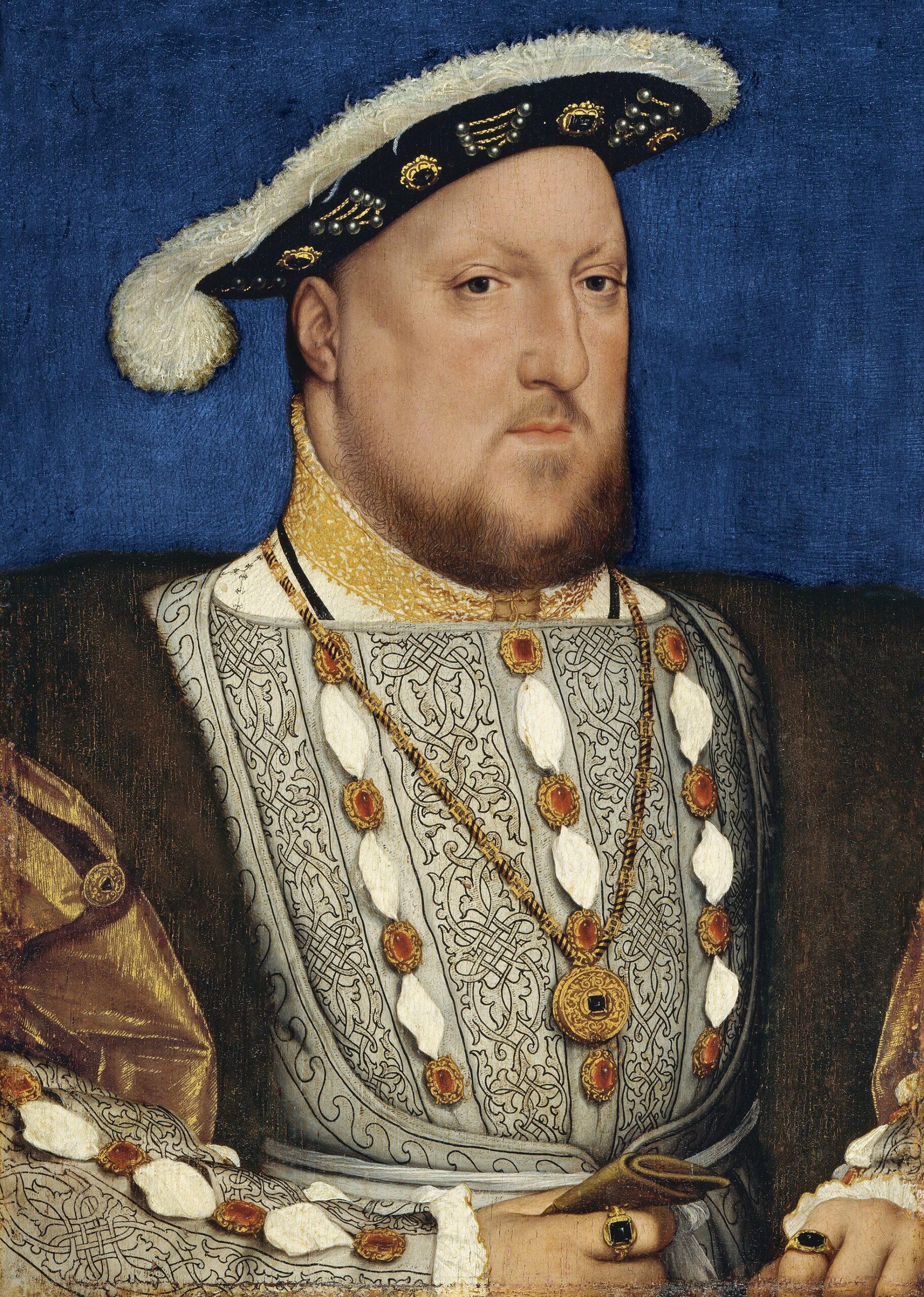
About the paintings. Holbein was capable of practicing either a literal or a stylized manner, a distinction that’s easy to miss because he painted at such a consistently high level. Thomas More and Portrait of an English Lady display the heightened realism we most associate with the artist, illusionistic in attention to form and exceptionally detailed. By contrast, the miniature bust portrait of Henry VIII in Madrid (not in the show) is an artifice, a playing card. His skill as a draftsman made these shifts possible, as did an ability to synthesize different sources. You can walk through the show and try ticking off the allusions to German, Flemish, or Italian painting. Holbein was adept enough to shift modes, or combine them in a painting, without our noticing. Then again, he was good enough to make any mode his own. There’s no confusing a painting by Holbein with anyone else’s.
Holbein: Capturing Character is a foil to last year’s exhibition of Florentine portraits at the Met. Both shows provide visual records of Renaissance courts, the players clothed in their Sunday best against the inevitable backdrops of palace intrigue. The image of the urbane courtier popularized in Italy had to wait another century to catch on in London, when van Dyck arrived under the employ of Charles I. Holbein’s sense of style, often compressed into the limitations of half-figure compositions, was reserved by comparison. Still, it must be remembered that the current show doesn’t do justice to Holbein’s ambitions as a painter. London’s The Ambassadors, the standing portrait of Christina of Denmark, or the disturbing realism of The Dead Christ in the Tomb would have caused a sensation in New York. Some gaps can never be filled. There is a preparatory pen drawing—once owned by Erasmus—of Thomas More surrounded by his large family; the subsequent painting measured eight by thirteen feet and was destroyed by fire in the eighteenth century. According to art historian Roy Strong, “its destruction means we lost the greatest single visual artefact to epitomize the aims and ideals of the early Renaissance in England.”
Not that these omissions dampen the attraction. I went soon after the museum opened on a mid-week morning, expecting to have the show pretty much to myself. The galleries were already crowded, and one guesses they’ll remain so until the exhibition closes. As well they should.
Holbein: Capturing Character, organized in conjunction with the Getty Museum, remains on view at the Morgan Library & Museum until May 15, 2022.



